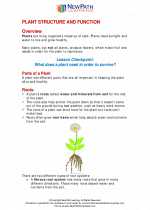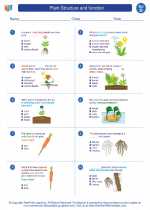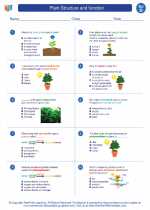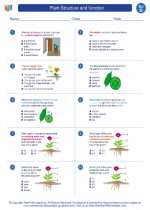Plant Structure and function -> boyle's law
Boyle's Law Equation
The mathematical equation for Boyle's Law is:
center;">\[ P \cdot V = k \]
Where:
Explanation of Boyle's Law
Boyle's Law states that, at constant temperature, the pressure of a given mass of gas is inversely proportional to its volume. In simpler terms, when the volume of a gas decreases, the pressure of the gas increases, and vice versa.
Study Guide for Boyle's Law
- Understanding the Equation: Make sure to understand the equation \( P \cdot V = k \) and how pressure and volume are related.
- Graphical Representation: Practice plotting pressure-volume graphs to visualize the inverse relationship described by Boyle's Law.
- Real-life Examples: Look for examples in everyday life where Boyle's Law is evident, such as inflating a balloon or using a syringe.
- Practical Experiments: Perform experiments to demonstrate Boyle's Law using different gases and varying pressure and volume conditions.
- Problem-Solving: Practice solving numerical problems related to Boyle's Law to reinforce understanding of the concept.
By mastering Boyle's Law, you will gain a deeper understanding of the behavior of gases and their properties. These principles are not only important in the field of science, but also have practical applications in various industries.
.◂Science Worksheets and Study Guides Fourth Grade. Plant Structure and function
Study Guide Plant Structure and function
Plant Structure and function  Worksheet/Answer key
Worksheet/Answer key Plant Structure and function
Plant Structure and function  Worksheet/Answer key
Worksheet/Answer key Plant Structure and function
Plant Structure and function  Worksheet/Answer key
Worksheet/Answer key Plant Structure and function
Plant Structure and function  Vocabulary/Answer key
Vocabulary/Answer key Plant Structure and function
Plant Structure and function  Vocabulary/Answer key
Vocabulary/Answer key Plant Structure and function
Plant Structure and function  Vocabulary/Answer key
Vocabulary/Answer key Plant Structure and function
Plant Structure and function  Vocabulary/Answer key
Vocabulary/Answer key Plant Structure and function
Plant Structure and function 

 Worksheet/Answer key
Worksheet/Answer key
 Worksheet/Answer key
Worksheet/Answer key
 Worksheet/Answer key
Worksheet/Answer key
 Vocabulary/Answer key
Vocabulary/Answer key
 Vocabulary/Answer key
Vocabulary/Answer key
 Vocabulary/Answer key
Vocabulary/Answer key
 Vocabulary/Answer key
Vocabulary/Answer key

The resources above cover the following skills:
LIFE SCIENCE (NGSS)
From Molecules to Organisms: Structures and Processes
Students who demonstrate understanding can:
Construct an argument that plants and animals have internal and external structures that function to support survival, growth, behavior, and reproduction.